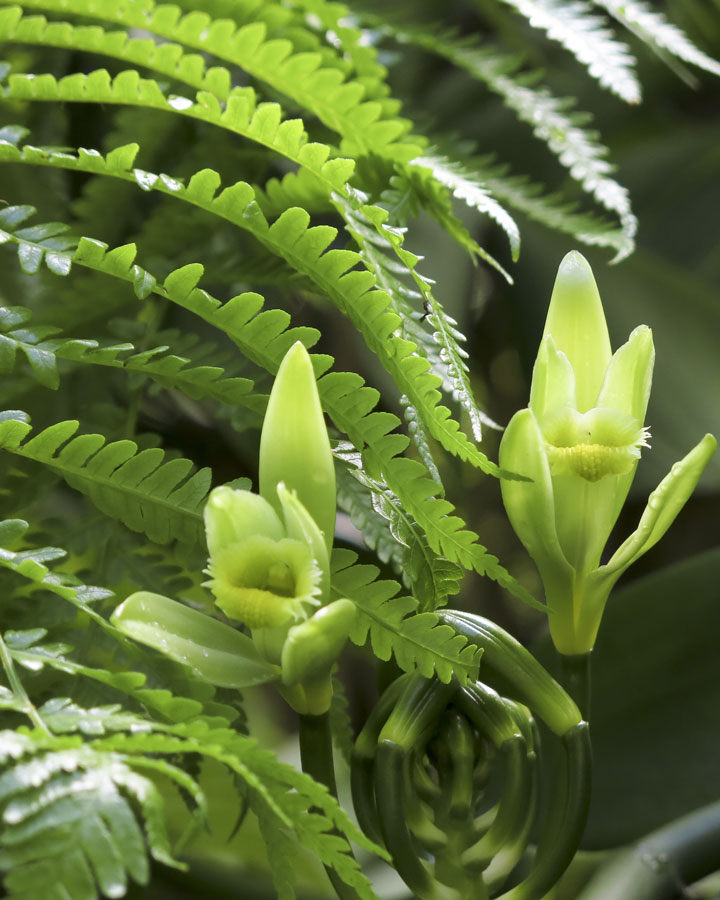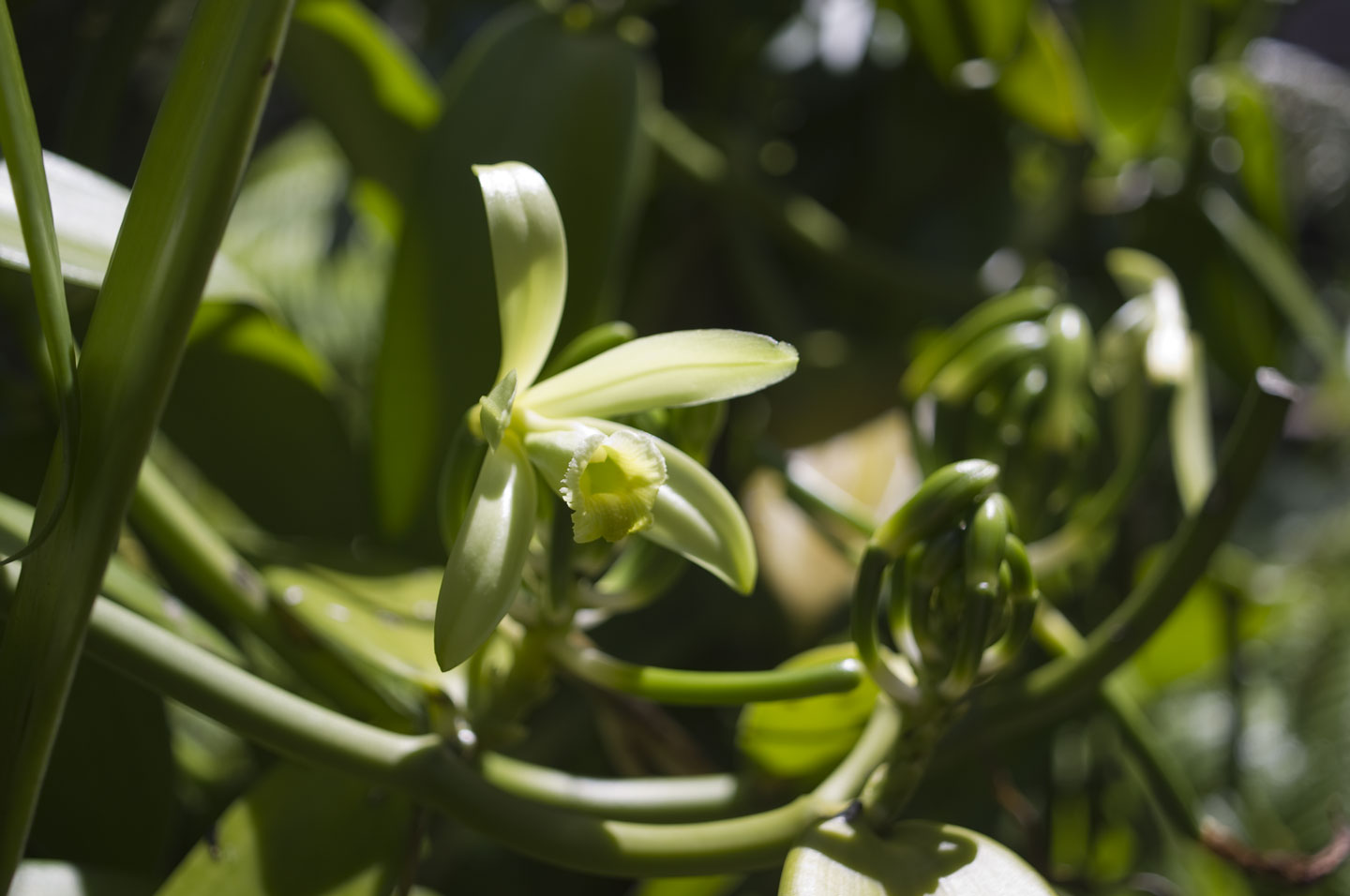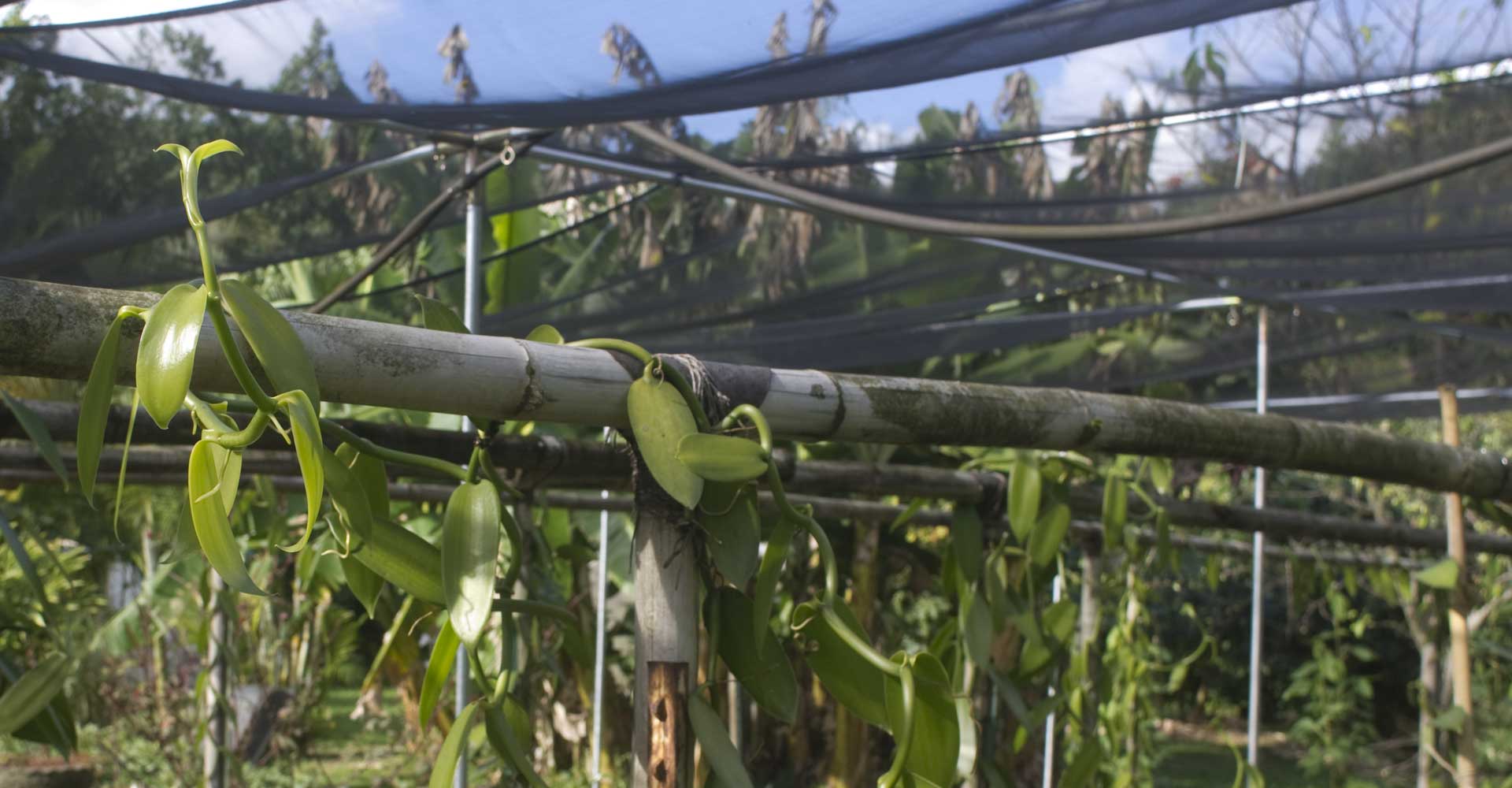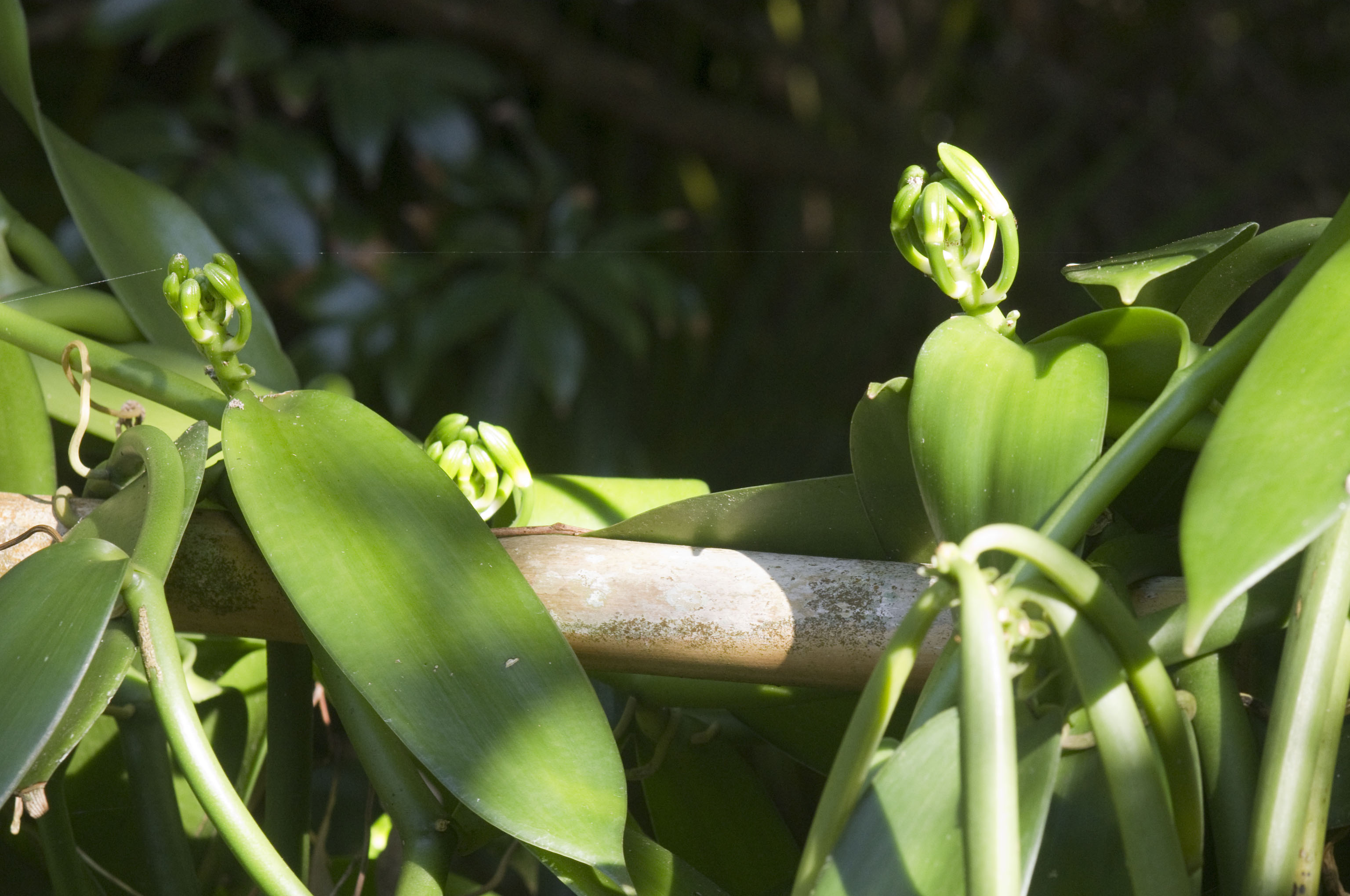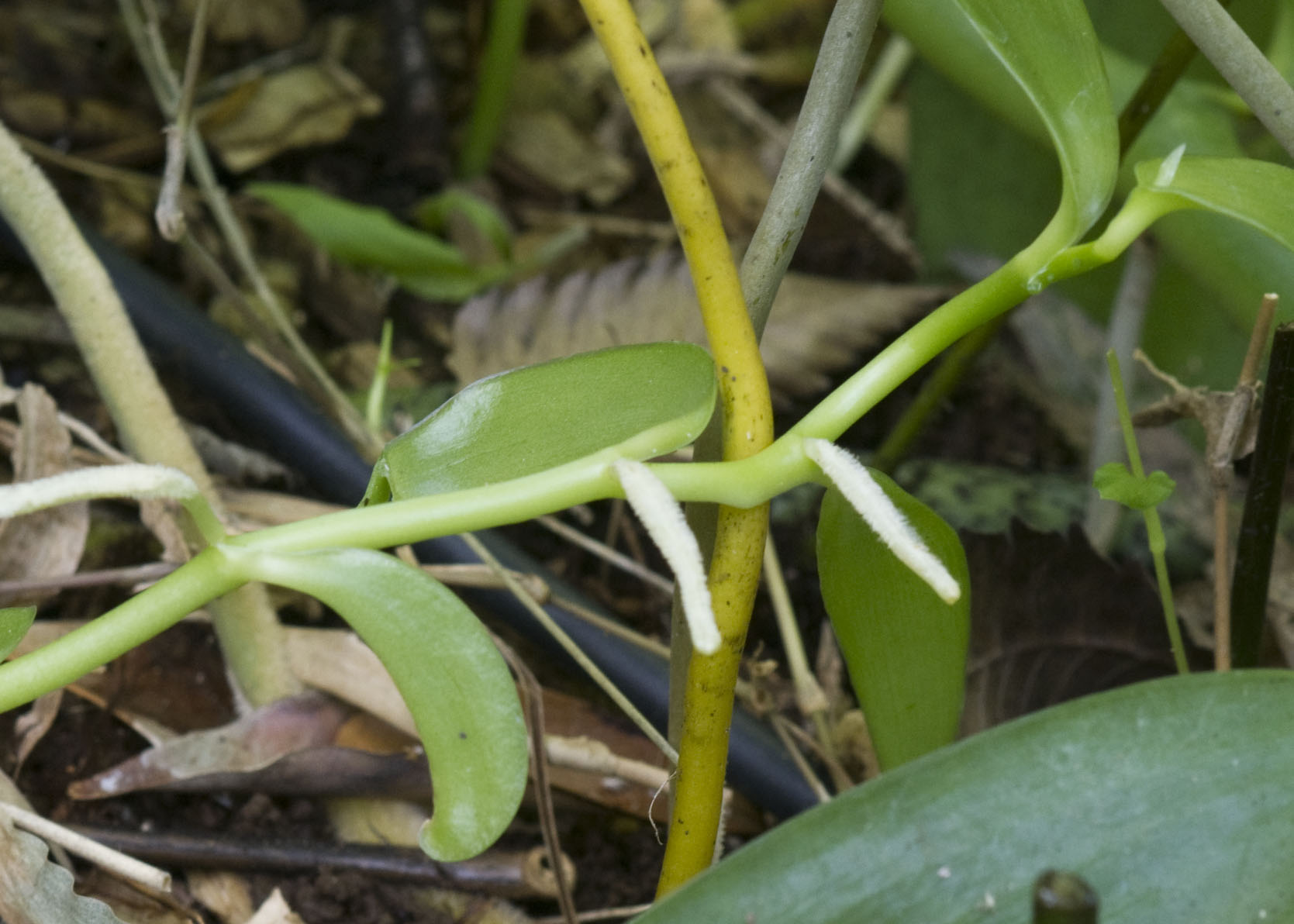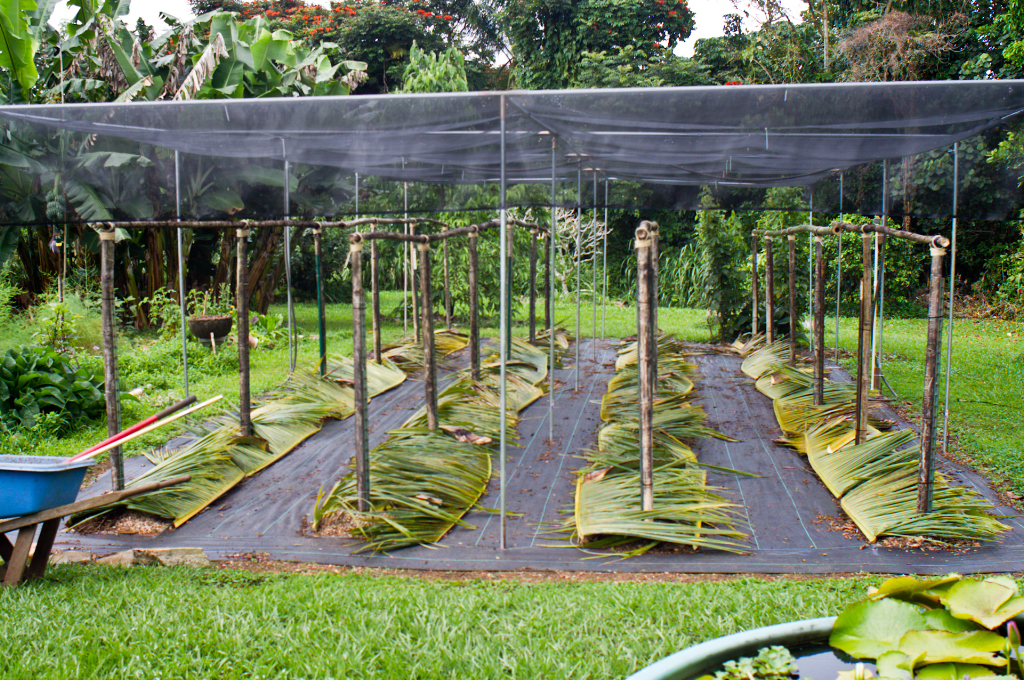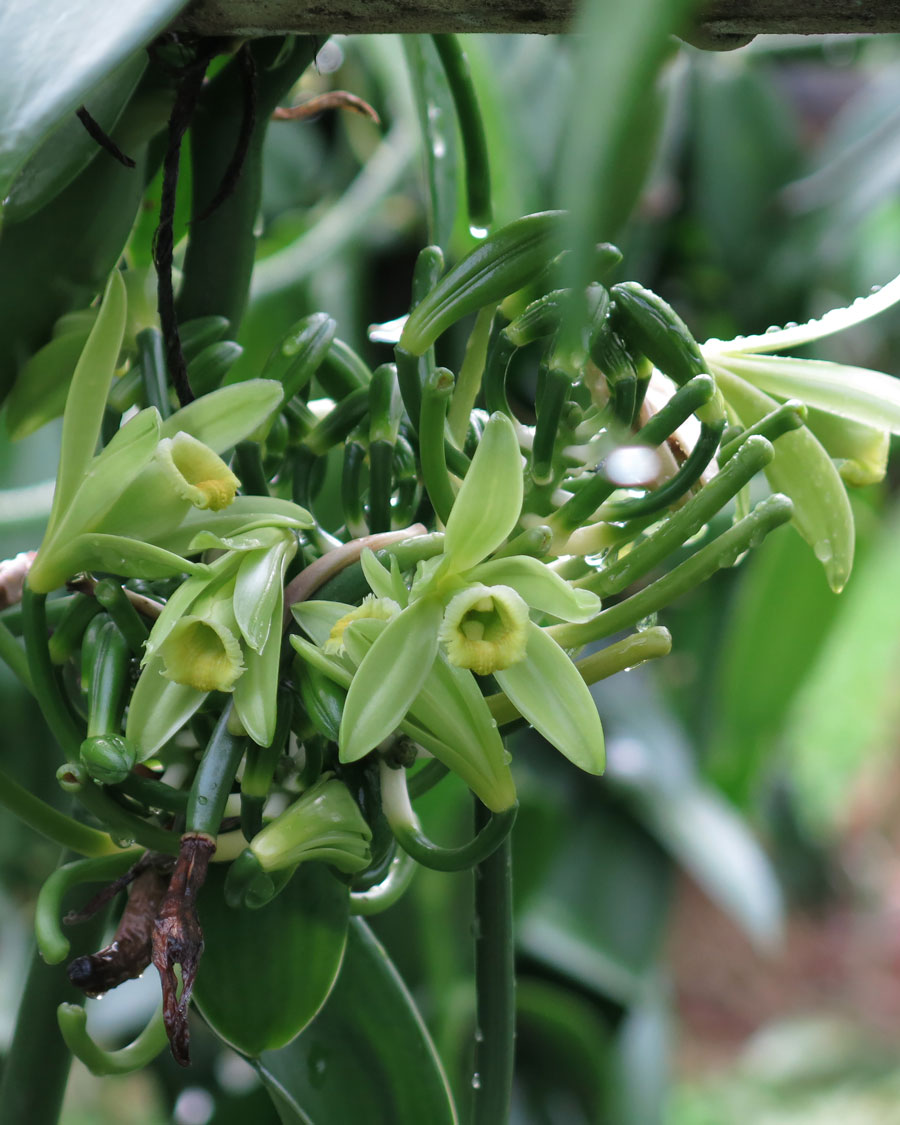
This morning I came across two racemes in the vanillery that had seven open blossoms on each of them! This is really quite unusual. When the vanilla vines are really growing strongly, the flowering racemes can come out double or triple or more. Usually, the raceme is a single stalk of flowers with 1 — 20 flower buds on it. The buds will open usually one at a time over a period of several weeks until they have all opened. When there is a huge amount of vitality in the vine, though, the raceme can include branches of racemes, making it possible for a large number of flowers to sprout from a single node. This is a very good thing, because… (read)
Full Article…
